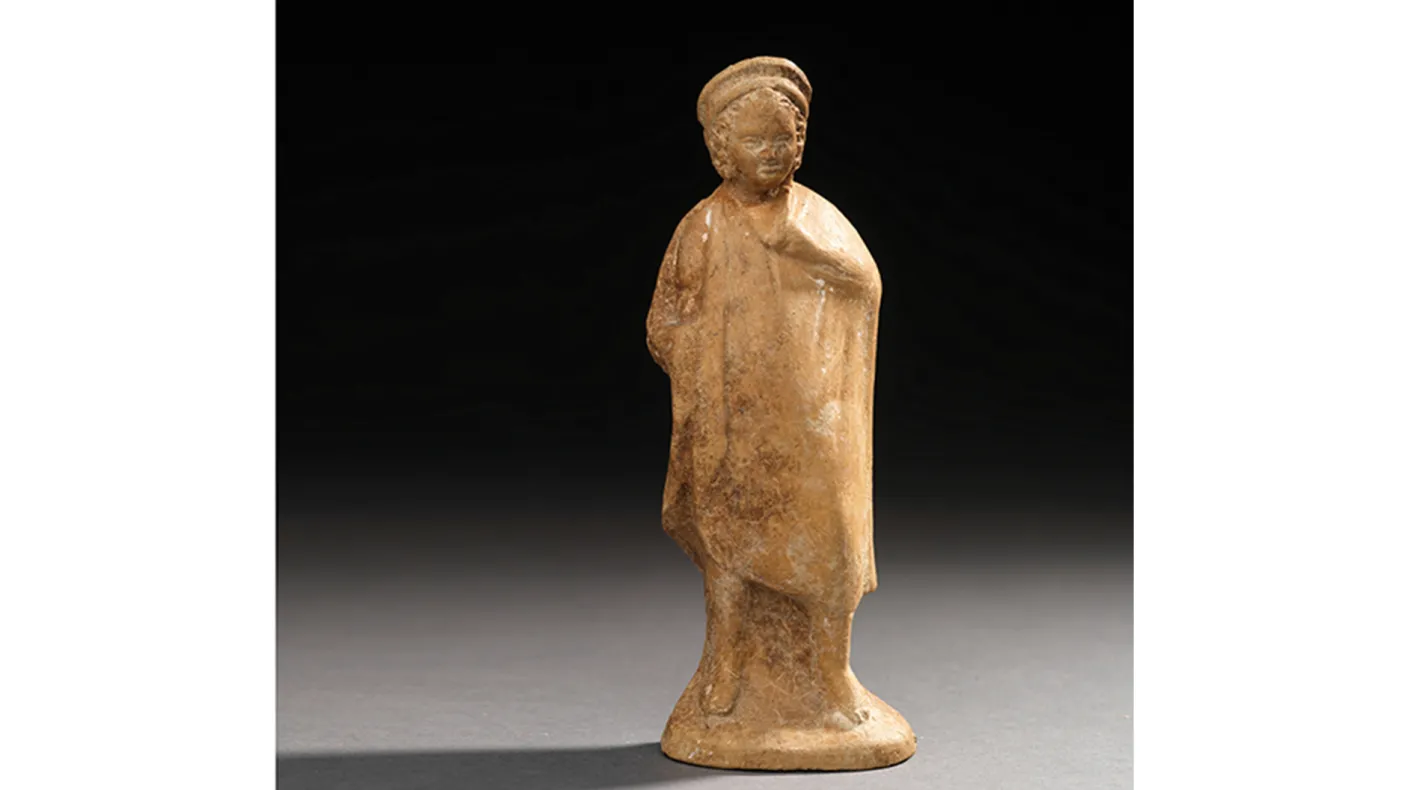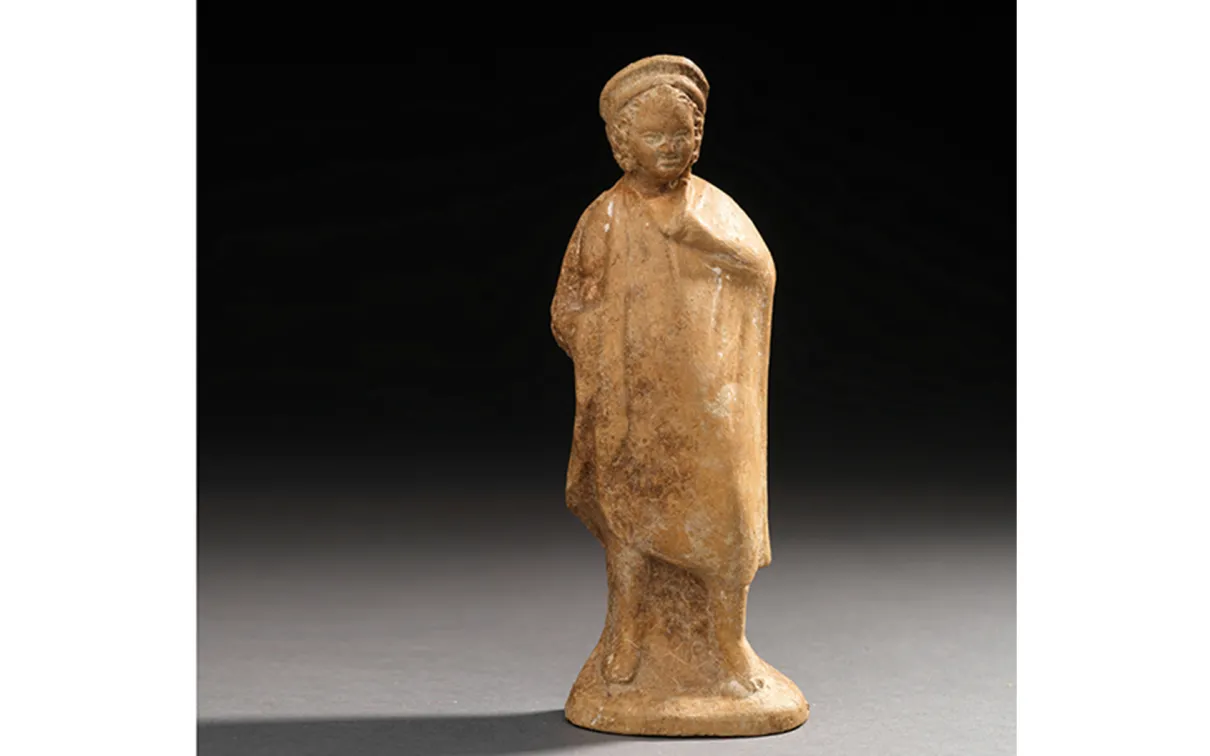The Persistence of Fashion
Terracotta statuette offers a glimpse into the history of men’s fashion.
Published
Categories
Author
A Hellenistic terracotta
A Hellenistic terracotta statuette of a standing youth from about 300 BCE, on display in the ROM’s A.G. Leventis Gallery of Ancient Cyprus, offers an interesting glimpse into the history of men’s fashion—not only revealing the ancient past but also telling us about the present.
At the time, the standing youth’s attire was very popular in many parts of the Hellenistic world. He is dressed as a Macedonian soldier, wearing a kausia (hat), chlamys (cloak), and krepides (high boots)—an outfit likely emulating the clothing of the great hero Alexander the Great (356–323 BCE). The hat consists of a slightly domed, almost flat top with a thick tubular band. The head-gear worn by the youth is intriguing since it closely resembles the chitrali, a hat worn by men in eastern Afghanistan and western Pakistan today.
Chitrali
A Pakistani man wearing a chitrali today compared to the statue of a standing youth from ca. 300 BCE. Chitrali image by Justine Evans / Alamy photos.
The origin of the kausia/chitrali
The origin of the kausia/chitrali is steeped in controversy. Some historians believe that the kausia originated in Macedonia and that Macedonian soldiers brought it to Afghanistan. Others believe that Alexander and his troops adopted the kausia from the local inhabitants of northern Afghanistan during their winter campaign in the Hindu Kush in 327–26 BCE. Returning to the West, they brought the hat with them, where it quickly became popular. This debate continues today.
In the West, the kausia endured the fate of most trends, eventually waning in popularity, while in Afghanistan and Pakistan, the chitrali has endured and remained in fashion for centuries if not millennia.
Paul Denis
Paul Denis is Assistant Curator of the Greek, Etruscan, Roman, and Byzantine collections at the ROM.




